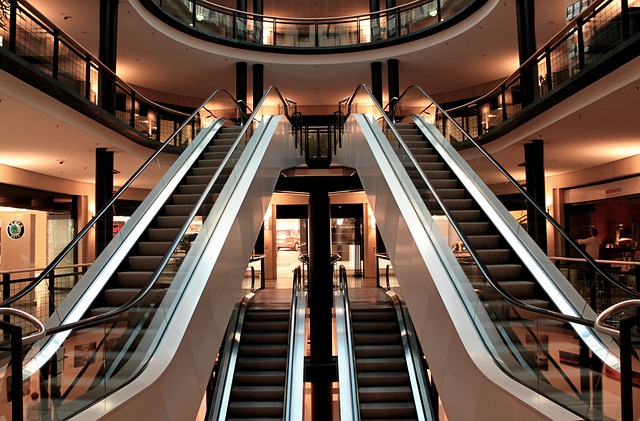Exploring the Advantages of Pre-Engineered Metal Buildings

In the realm of construction, pre-engineered metal buildings stand out as a testament to innovation and efficiency. These structures, fabricated off-site and assembled on location, offer a plethora of advantages that traditional construction methods often struggle to match. From cost-effectiveness to environmental sustainability, pre-engineered metal buildings have revolutionized the way we approach construction projects of various scales. Let's delve into the distinct advantages that make these buildings an increasingly popular choice in today's architectural landscape.
Cost-Effectiveness and Time Efficiency
One of the most compelling advantages of pre-engineered metal buildings lies in their cost-effectiveness and time efficiency. Unlike conventional construction methods that involve lengthy design processes and on-site fabrication, pre-engineered metal buildings are designed, manufactured, and assembled in a fraction of the time. With precise engineering and standardized components, these buildings significantly reduce construction timelines, leading to substantial cost savings. Moreover, the controlled environment of the manufacturing facility minimizes material waste and labor expenses, further enhancing cost-effectiveness. Additionally, the modular nature of pre-engineered metal buildings allows for easy expansion or reconfiguration, providing flexibility that traditional structures often lack. This swift construction process not only saves money but also allows businesses to expedite their operations and start generating revenue sooner.
Durability and Structural Integrity
Another noteworthy advantage of pre-engineered metal buildings is their unparalleled durability and structural integrity. Constructed from high-quality steel, these buildings boast exceptional strength and resilience, capable of withstanding harsh environmental conditions, including extreme weather events and seismic activity. The inherent properties of steel, such as corrosion resistance and fire retardance, ensure longevity and minimal maintenance requirements, translating to long-term cost savings for building owners. Additionally, the precision engineering and stringent quality control measures employed in the fabrication process guarantee consistency and reliability in every component, from beams and columns to roofing panels. As a result, pre-engineered metal buildings offer peace of mind to occupants, knowing that their structure is built to last and protect their investments for years to come.
Environmental Sustainability and Energy Efficiency
In an era increasingly focused on environmental sustainability, pre-engineered metal buildings shine as eco-friendly construction solutions. The use of steel, a highly recyclable material, reduces the demand for virgin resources and minimizes the carbon footprint associated with construction projects. Furthermore, the energy efficiency of pre-engineered metal buildings is a significant boon, with advanced insulation systems and reflective roofing materials helping to regulate indoor temperatures and reduce heating and cooling costs. The airtight seals and precise construction techniques employed in these buildings enhance thermal performance, creating a comfortable and energy-efficient interior environment. Additionally, the potential for incorporating renewable energy systems, such as solar panels, further enhances the sustainability credentials of pre-engineered metal buildings. By choosing these structures, architects, and developers contribute to a greener future while enjoying the practical benefits of reduced energy consumption and operating expenses.
Versatility and Architectural Freedom
With PEMB construction, architects and designers enjoy unparalleled versatility and architectural freedom. Unlike traditional building methods that often impose constraints on design possibilities, pre-engineered metal buildings offer a wide range of customization options to suit diverse aesthetic preferences and functional requirements. From sleek and modern designs to rustic and industrial aesthetics, the flexibility of steel construction allows for the realization of virtually any architectural vision. Moreover, the clear-span interiors characteristic of pre-engineered metal buildings provide expansive and unobstructed spaces, ideal for a variety of applications, including warehouses, recreational facilities, and commercial complexes. Whether seeking contemporary office space or a sprawling manufacturing facility, architects can unleash their creativity with PEMB construction, delivering innovative solutions that combine form and function seamlessly. By embracing the versatility of pre-engineered metal buildings, architects can redefine the boundaries of architectural design, shaping a built environment that not only meets the needs of today but also anticipates the challenges and opportunities of tomorrow.
Adaptability and Expansion Potential
Pre-engineered metal buildings offer unmatched adaptability and expansion potential, catering to the evolving needs of businesses and communities. The modular construction approach allows for seamless integration of additional components or modifications, enabling effortless expansion as demand grows or operational requirements change. This scalability is particularly advantageous for businesses experiencing rapid growth or fluctuations in space requirements, as it eliminates the need for costly and disruptive renovations. Furthermore, the ability to relocate or repurpose pre-engineered metal buildings adds to their appeal, providing flexibility that traditional structures cannot match. Whether accommodating new production lines, retail outlets, or office spaces, the adaptability of these buildings ensures that they remain valuable assets for years to come, adapting to the ever-changing dynamics of the modern world.

Resilience and Disaster Mitigation
In an era marked by increasing environmental volatility, the resilience of pre-engineered metal buildings is a significant asset for disaster mitigation and risk management. Engineered to withstand extreme weather events, seismic activity, and other natural disasters, these structures offer a robust shelter for occupants and assets, minimizing downtime and protecting investments. The inherent strength and durability of steel construction provide a crucial line of defense against the unpredictable forces of nature, ensuring continuity of operations even in the face of adversity. Moreover, the rapid construction timeline associated with pre-engineered metal buildings allows for quicker recovery and rebuilding efforts following a disaster, fostering community resilience and accelerating the path to recovery.
Pre-engineered metal buildings represent a paradigm shift in the construction industry, offering a host of advantages that redefine the way we approach building design and implementation. From cost-effectiveness and time efficiency to durability and sustainability, these structures embody innovation and efficiency at every stage of the construction process. With their versatility, adaptability, and resilience, pre-engineered metal buildings are poised to shape the built environment of the future, providing sustainable and resilient solutions to meet the evolving needs of businesses and communities worldwide.